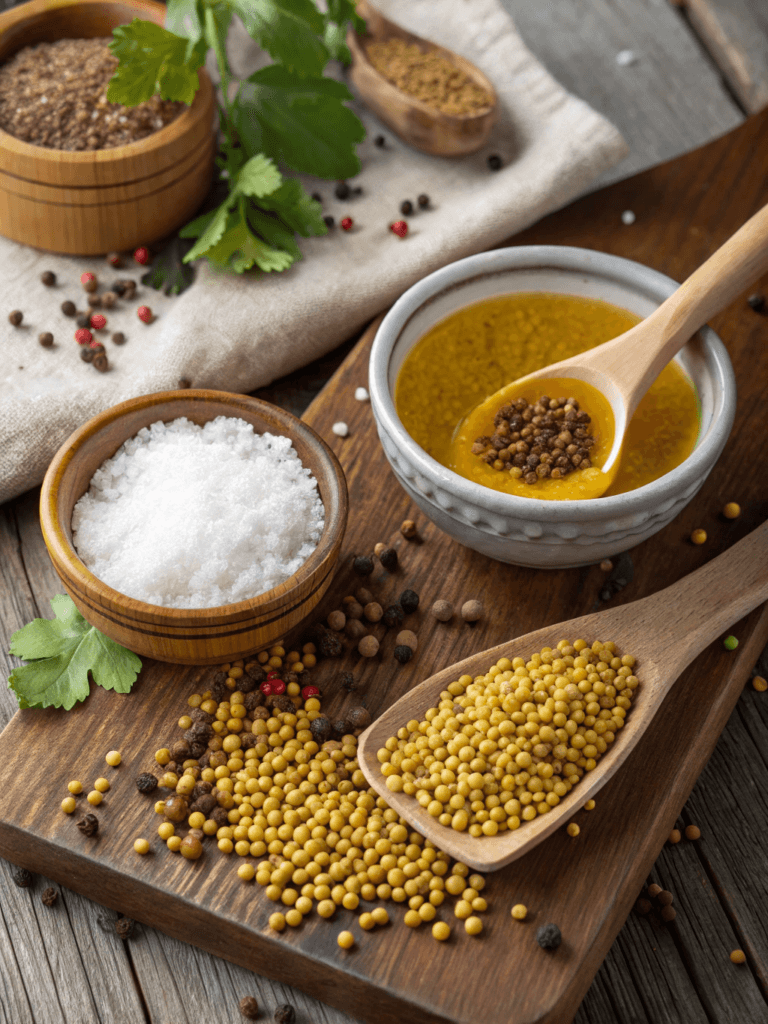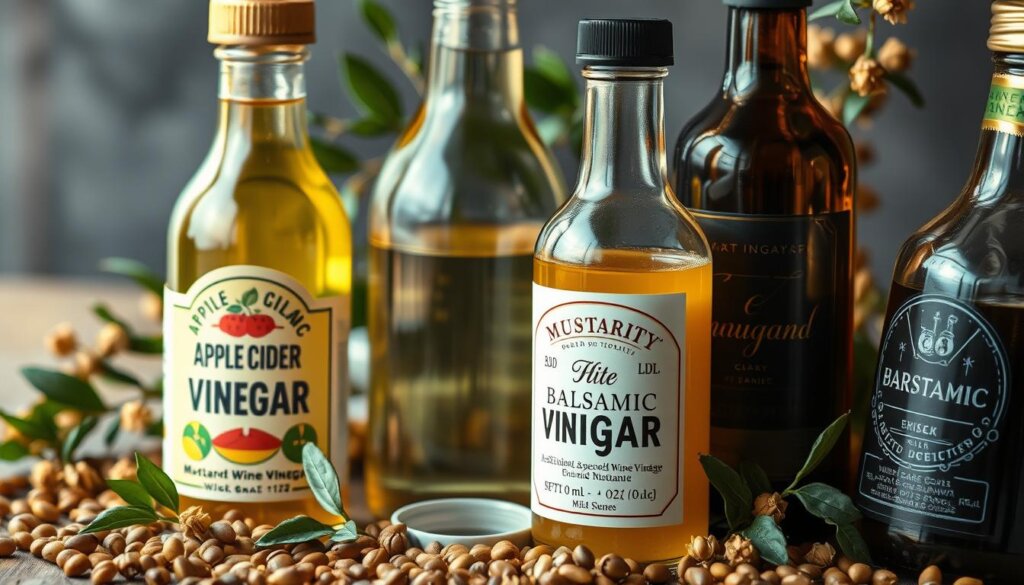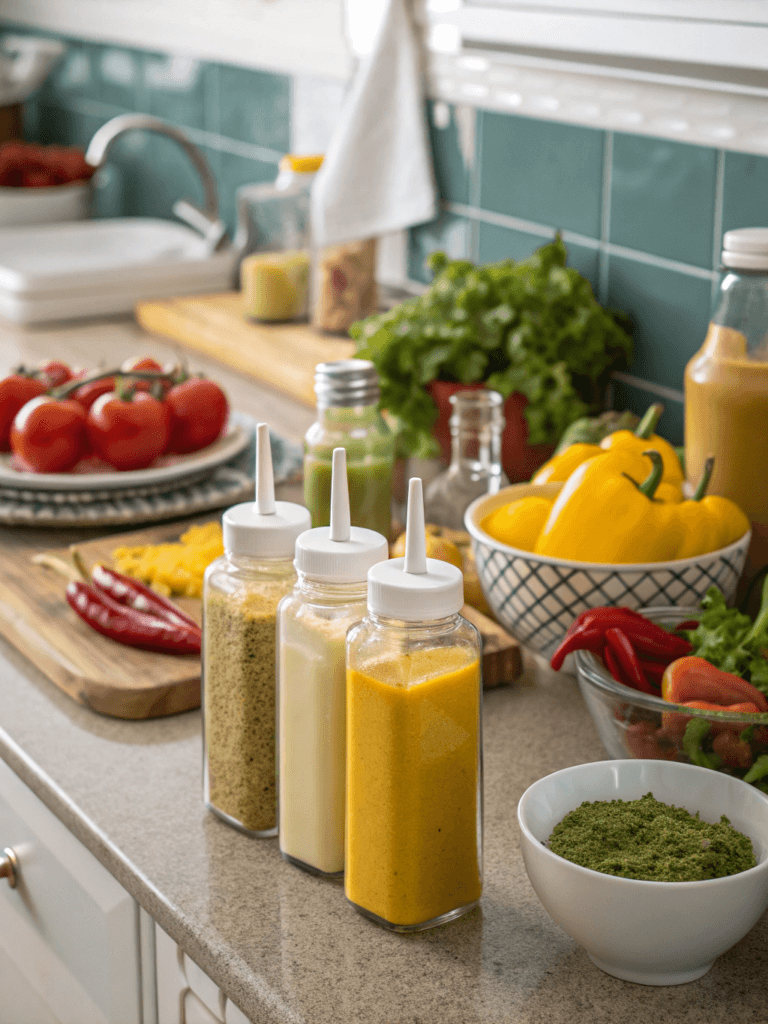Ever thought about the gluten in your favorite sandwich spread? For those managing gluten sensitivities or celiac disease, understanding the gluten content in condiments like mustard is essential. Most mustard varieties are naturally gluten-free, but cross-contamination or added ingredients could pose risks.
Explore other gluten-free essentials with our Easy Gluten-Free Baked Donut Recipe or enhance your sandwich experience with our Best Bread Options for Gluten Intolerance. Need a crunchy side? Try our Delicious Gluten-Free Pita Chips for the perfect accompaniment!
Table of contents
- Understanding Gluten and Gluten-Free Diets
- The Ingredients of Mustard
- Is Mustard Gluten Free?
- The Role of Vinegar in Mustard
- Popular Mustard Brands and Their Gluten Status
- Understanding Cross-Contamination Risks
- Choosing Gluten-Free Mustard: Tips and Recommendations
- Homemade Mustard: A Gluten-Free Alternative
- Conclusion
- FAQ
Understanding Gluten and Gluten-Free Diets
In recent years, more people have started eating gluten-free. This is because of gluten intolerance or celiac disease. It’s important to know what gluten is and why some people can’t eat it.
What is Gluten?
Gluten is a protein in wheat, barley, and rye. It makes dough stretchy and chewy. Many foods have gluten, so those on a gluten-free diet must choose carefully.
For people with celiac disease or gluten intolerance, gluten is harmful. It can cause stomach problems and inflammation.
Why Avoid Gluten?
People with gluten intolerance or celiac disease need to avoid gluten. Eating gluten can make them very sick. They must check food labels closely.
Knowing which foods have gluten helps you make good choices. Even foods like mustard can have gluten, making cross-contamination a risk.
Learning about gluten and gluten-free diets helps you pick safe foods. You can enjoy meals that are right for you.
The Ingredients of Mustard
Mustard is a tasty condiment that makes many dishes better. Knowing what’s in mustard helps us pick safe options for those who can’t eat gluten. Most mustard ingredients are gluten-free, but it’s good to know about others for gluten sensitivity.
Common Ingredients Found in Mustard
Most mustards have:
- Mustard Seeds: These seeds are naturally gluten-free. They give mustard its flavor and texture.
- Vinegar: Vinegar is key for the right taste and texture. Different vinegars can change the gluten level.
- Flavoring Agents: Spices, herbs, and preservatives are added based on the recipe.
How Ingredients Can Affect Gluten Content
Mustard seeds are safe, but watch out for some vinegars. White vinegar made from gluten grains can add gluten. Brands like Organicville use corn vinegar, making their mustard gluten-free.
Be careful about cross-contamination in making or serving mustard. Always check labels for gluten in mustard. Good brands say they’re gluten-free and follow strict rules to avoid contamination. Knowing this helps you pick the right mustard for your diet.

Is Mustard Gluten Free?
When we ask, is mustard gluten free, we need to look at what’s in it. Mustard is made from mustard seeds and vinegar. Both are usually okay for those who can’t have gluten.
Mustard seeds don’t have gluten, which is good news. The vinegar used can change things. Red wine, apple cider, and balsamic vinegar are often safe for gluten-free diets.
But, not all vinegar is safe. Malt vinegar comes from grains that have gluten. Always check labels to make sure mustard is gluten-free.
Some brands might not say they’re gluten-free. This makes it important to be careful. Look for mustard that’s been certified gluten-free.
Mustard from restaurants might not be safe. It could have gluten from being refilled. But, some brands like Eden Organic Brown Mustard and Organicville are safe.
Annie’s mustard is also safe. They follow strict rules to avoid gluten. The Gluten-Free Certification Organization checks their products to make sure they’re safe.
Many Dijon mustards are gluten-free too. They meet FDA rules, which means they have very little gluten. Organicville’s Dijon mustard is even safer, with gluten levels below 10 ppm.
Brands like Boar’s Head and French’s also have gluten-free Dijon mustard. It’s good to check labels and websites often. This way, you can make sure you’re getting safe mustard.
With the right choice, mustard can be a tasty part of your meals. You can use it in salads, dressings, or in gluten-free recipes.
The Role of Vinegar in Mustard
Knowing about vinegar in mustard is key, for those watching their gluten intake. Vinegar boosts flavor and keeps the mustard fresh. But, not all vinegars are gluten-free.
Types of Vinegar and Their Gluten Content
Many vinegars are gluten-free, which is good news for those with gluten issues. Distilled white vinegar is a safe pick because it’s made through a process that removes gluten. On the other hand, malt vinegar comes from barley and has gluten, which is a no-go for those avoiding gluten.
Here’s a look at some common vinegars and their gluten levels:
| Vinegar Type | Gluten Content |
|---|---|
| Distilled White Vinegar | Gluten-Free |
| Cider Vinegar | Gluten-Free |
| Malt Vinegar | Contains Gluten |
| Wine Vinegar | Gluten-Free |
Why Vinegar Source Matters
The type of vinegar used in mustard is very important for safety. Some recipes use gluten-free vinegar, but others might use malt vinegar for flavor. Paying attention to the vinegar source helps you make better choices for your diet. Always read labels to make sure the vinegar is gluten-free.

Popular Mustard Brands and Their Gluten Status
Finding the right mustard is easier when you know about gluten. Many U.S. brands offer gluten-free options. This is great for people with gluten sensitivity or celiac disease. It’s important to look at the brand’s reputation and how they label their products.
Gluten-Free Options Among Major Brands
Many well-known mustard brands have glutenless choices. Brands like Annie’s, Eden Organic, and Organicville focus on safe ingredients. They use gluten-free practices or check their recipes to avoid gluten. For example:
- Eden Organic Brown Mustard – Made with organic apple cider vinegar, gluten-free.
- Organicville Mustard – Certified gluten-free by the Gluten-Free Certification Organization.
- Annie’s Mustard – While not certified gluten-free, it is made with gluten-free ingredients and follows strict allergen policies.
Brands that May Contain Gluten
Some mustard brands might have gluten, even if they don’t say so. Brands like Heinz and Gulden’s might not have gluten, but they don’t always say they’re gluten-free. Always read the ingredient list carefully to avoid gluten. Mustard can also get gluten from being made in facilities that handle wheat.
Understanding Cross-Contamination Risks
When you’re on a gluten-free diet, knowing about cross-contamination is key. Cross-contamination happens when gluten from wheat, barley, or rye touches gluten-free foods. This makes them unsafe for people with gluten-related disorders. It can happen at home or in stores, where being careful can help.
What is Cross-Contamination?
Cross-contamination can occur through shared kitchen surfaces, utensils, and cookware. These items must be cleaned well after gluten foods are prepared. Even tiny amounts of gluten can cause problems for those who must avoid it. Places in the kitchen where cross-contamination might happen include:
- Shared cooking utensils
- Countertops and cutting boards
- Frying oil used for multiple types of food
At home, simple steps can keep your kitchen safe for gluten-free foods. Create a special area for gluten-free items in your pantry and fridge. Also, use separate cooking tools to avoid cross-contamination.
How to Avoid Cross-Contamination with Mustard
Mustard is a special case when it comes to avoiding cross-contamination. Here are some tips:
- Buy mustard from brands that say it’s gluten-free.
- Use squeeze bottles to avoid touching the jar twice.
- Keep mustard away from gluten foods.
When you go shopping, be careful too. Bulk foods and prepared items can be risky because of shared scoops or surfaces. Being alert and informed can help avoid gluten cross-contamination.

Eating out also has its challenges. Tell the restaurant staff about your gluten-free needs. This way, your meal can stay safe. Remember, you must be careful to avoid gluten cross-contamination, even when eating out.
| Source of Cross-Contamination | Safe Practices |
|---|---|
| Shared utensils and cookware | Use dedicated gluten-free tools |
| Bulk food sections | Avoid and opt for pre-packaged items |
| Dining out | Ask about preparation methods and cross-contact |
| Condiment jars | Utilize squeeze bottles; avoid double-dipping |
Choosing Gluten-Free Mustard: Tips and Recommendations
Choosing gluten-free mustard needs careful attention. Mustard is mostly made from gluten-free ingredients like mustard seeds and vinegar. It’s important to know how to read labels well. Here are some tips to help you make good choices.
Reading Labels Effectively
When looking at mustard labels, watch out for ingredients that might have gluten. Look for malt vinegar or wheat. Always pick products that say they are gluten-free. These products have been tested and are safe.
Brands like Organicville have gluten-free certifications. This means their products are safe for those who need to avoid gluten.
Best Practices for Selecting Mustard
Choose brands that clearly label their products as gluten-free. Thrive Market, French’s, and Annie’s offer gluten-free mustards in different flavors. Be careful with specialty mustards that might use wheat flour.
Many mustards are gluten-free because of strict US Food and Drug Administration rules. Look for brands that keep their facilities clean, like Annie’s. This helps avoid contamination.
| Brand | Gluten-Free Certification | Notable Points |
|---|---|---|
| Eden Organic Brown Mustard | Yes | Made with high-quality ingredients |
| Organicville | Yes | Certified by Gluten-Free Certification Organization |
| Annie’s | Yes | High cleanliness standards to reduce cross-contamination |
| French’s | Yes | Widely available and varied flavors |
| Sir Kensington’s | Yes | Innovative flavor combinations |
Homemade Mustard: A Gluten-Free Alternative
Making your own mustard is fun and glutenless. You pick every ingredient, so you know it’s safe. A basic recipe uses yellow mustard seeds, apple cider vinegar, and flavorings. This way, you’re sure it’s gluten-free.
To make mustard, mix 1/3 cup of yellow mustard seeds with 1/3 cup of brown mustard seeds. Grind them, then mix with vinegar in a non-reactive saucepan. At first, it might be too strong. Let it sit at room temperature for 1 to 2 days. This lets the flavors blend and the spiciness grow.
Homemade mustard lasts up to 6 months in the fridge. For a thicker mustard, cook it a bit and add honey for a honey mustard flavor. If you can it, a 10-minute hot water bath seals it well.
Before you start, here’s a quick summary of the nutritional information based on an average serving size of 1 teaspoon:
| Nutrient | Amount per Serving |
|---|---|
| Calories | 4 kcal |
| Carbohydrates | 0.3 g |
| Protein | 0.2 g |
| Fat | 0.2 g |
| Saturated Fat | 0.01 g |
| Monounsaturated Fat | 0.2 g |
| Sodium | 31 mg |
| Fiber | 0.1 g |
| Sugar | 0.2 g |
Starting your mustard-making journey can make your cooking better and safer for your diet. With just a few ingredients and steps, you’ll have a tasty, gluten-free condiment to add to your meals.
Conclusion
In summary, mustard can be gluten-free if you’re careful. Mustard seeds are naturally glutenless. But, other ingredients added can be a problem.
Always check the ingredient labels to make sure your mustard is safe. This way, you can enjoy mustard in your gluten-free diet without worry.
Knowing about cross-contamination risks is key, too. This is important when eating out. Shared condiment bottles can be risky for those with gluten issues.
When trying different mustards, like yellow, Dijon, or spicy ones, choose gluten-free ones. This helps you avoid gluten by mistake.
There are many gluten-free mustard options out there. Brands like Eden Organic Brown Mustard and Annie’s are good choices. Knowing what ingredients are in your food is important.
By following these tips, you can enjoy mustard’s flavors without health worries.
FAQ
Is mustard gluten-free?
Yes, mustard can be gluten-free. It depends on the ingredients used. Mustard seeds are usually gluten-free. But, some additives or vinegars like malt vinegar might have gluten.
Always check the labels for gluten. Look for certifications too.
What ingredients should I look for in gluten-free mustard?
For gluten-free mustard, look for mustard seeds, distilled vinegar, and natural flavorings. Avoid mustards with malt vinegar or wheat-based additives.
How can I ensure that the mustard I buy is safe for my gluten-free diet?
To make sure mustard is safe, read labels for gluten-free certifications. Check for gluten-containing ingredients. Research the brand’s gluten practices too.
What types of vinegar are safe in gluten-free mustard?
Distilled white vinegar and apple cider vinegar are gluten-free. Malt vinegar, made from barley, has gluten. Make sure to check the vinegar type in your mustard.
Which mustard brands offer gluten-free options?
Annie’s, French’s, and Koops’ offer gluten-free mustards. Always check labels, though. Some brands like Heinz and Gulden’s might be safe but not labeled as gluten-free.
What is cross-contamination, and how can I avoid it with mustard?
Cross-contamination happens when gluten-free products touch gluten. This can happen in kitchens or factories. Choose mustard made in gluten-free facilities. Ask about preparation when eating out.
How can I read mustard labels effectively to find gluten-free options?
Look for gluten-free statements on mustard labels. Check the ingredient list for gluten sources. Choose brands that clearly say their products are gluten-free.
Can I make homemade mustard that is gluten-free?
Yes! Making homemade mustard lets you control the ingredients. Use gluten-free vinegar and mustard seeds. Add your favorite spices and flavorings.





